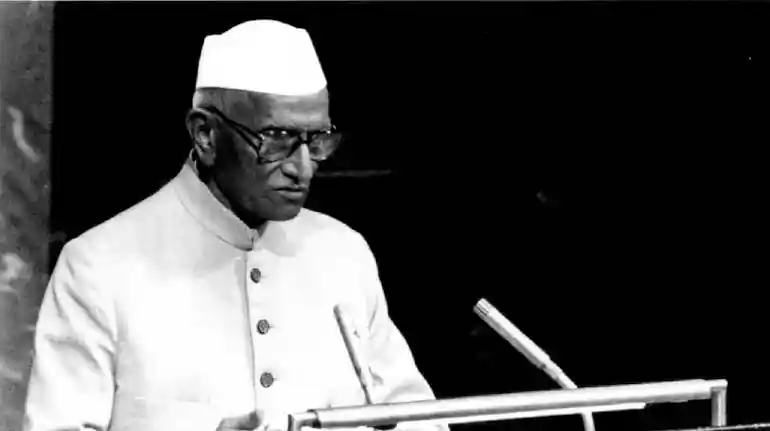A budget for the people from the God of budgeting
Let’s look at one of the most welcomed budgets of all time, the budget that is taken as the milestone for each year’s budget- the people’s budget by none other than Morarji Desai.

Morarji Desai during his budget speech; Image source: Moneycontrol
You might know Morarji Desai as the first non-congress Prime Minister of India but he also served as the finance minister under Indira Gandhi. He holds the record of the highest budgets presented for India.
He was a stubborn man, a person who just didn't know when to give up. He has been honoured by both India and Pakistan with their highest civilian awards- Bharat Ratna and Nishan-e-Pakistan and is known internationally for his peace activity to resolve the conflict between Pakistan and India.
Morarji Desai’s record is the presentation of 10 budgets followed by P.Chidambaram with 9 budgets. With the record of highest budgets, it would be odd if none of his budgets stood out. In fact, he has given several thought-provoking budgets during his tenure. His budget for 1968 is definitely at top of the list.
Presented on his birthday, that is 29th February 1968 he delivered a budget that is regarded as the people's budget. Even today the finance ministers create a budget in hope that the current budget could be compared with Desai’s budget- a budget made for the people.
Desai’s budgets are considered to be the shortest. In his budget of 1968 of mere 72 paragraphs, he managed to capture what was needed.
After Congress came to power, Desai had to present a full budget. Desai had always been a straightforward and stubborn man. He was ahead of his time in terms of his radical and reformist thoughts. In the budget speech for the year 1968, he explained the situation of the Indian economy exactly how it was without any sugar coat: high inflation and low development.
“Successive droughts, shortage of food and raw materials, rising prices, subdued industrial demand, the inadequacy of exports and savings and sluggishness in the capital market had combined to create a feeling of despondency which has afflicted us,” Desai said.
He explained how the economy was stuck in a debt trap and the deficit needs to be filled with extra revenue. Now, for this extra revenue, he could have added new taxes but he realised that the economy was only recovering at that moment a new tax is not favourable for people. So, instead, he set out to make the existing tax system more efficient to cut down the cost.
He introduced a self-assessment system for excise tax. A lot of money went into administrating the excise department and the field officers were involved in a lot of corrupt practices. By introducing the self-assessment method, the burden on budget was heavily reduced. He put his faith in the manufacturers by introducing this self-assessment which resulted in a manufacturing boost and reduced the administrative burden on the excise department.
Another change in the tax regime was the removal of spouse allowance when both husband and wife were taxpayers. He said it is improper for a third party like the tax collection department to decide who is dependent on whom which is why it is best to eradicate it and avoid the strain on relationships.
He increased penalties for tax evaders so less tax evasion would take place. He also discontinued the separate surcharges on unearned and earned income which reduced the assessment time of taxes from 4 years to 2 years! Talk about a budget for the people.
Desai however resigned the next year as the finance minister to protest against the nationalisation of major banks. In various conflicts with the Indira Gandhi government, he left Congress and established the Janata party which won the elections making him the fourth prime minister of India.


